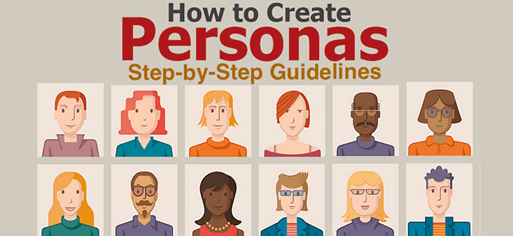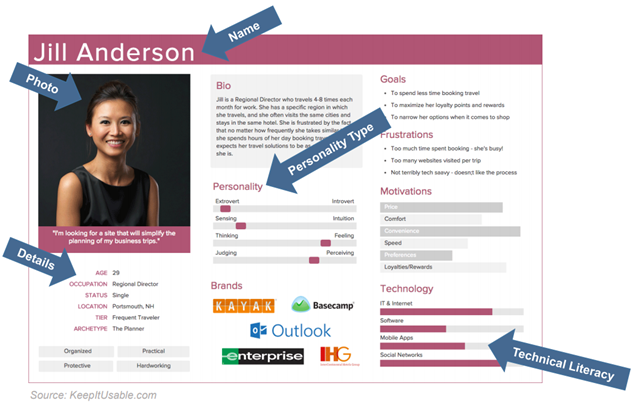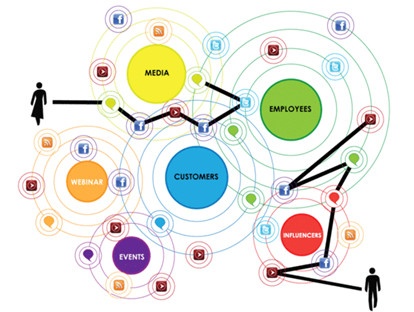

Course table of contents
1. Role of product manager and framework
2. Market segmentation and competitive analysis
3. User personas <- You are here
4. Hypothesis testing
5. Product positioning
6. Product roadmap
7. Drafting requirements for development
8. Business model and Business plan
9. Financial plan and pricing
- To be continued
In previous posts, I talked about who product managers are, what is their role in creating a product, as well as defining the target market and conducting competitive analysis. In this post, I will tell you how to form an understanding of who we are creating a product for and how this can affect the product itself. After that, we’ll look at how to manage product development and talk about development from a technical point of view, but for now, let's focus on the personas.
Who are User Personas?
Since we do not have the ability to really target each and every consumer, product management needs to form an understanding of your target audience. I am of the opinion that when designing products and services, you need to focus not on abstract patterns, but on specific consumers. This approach can be implemented if you adhere to the principles of Persona-Centered Design.
The persona is the archetype of the user. By focusing on well-formed personas, you can determine what features should be, what kind of navigation the user expects to see, what the interaction and appearance of the product should be in order for it to be successful. Working with personas helps to optimize development, reduce Time-to-Market (release time for new versions), and avoid unnecessary waste of time and resources.
Where do the personas come from?
It is very important to understand that personas should flow from real research. Despite the fact that they represent some kind of collective image, the personas should look like people (you can even generate a face for them). To shape personas, you need to find goals that your consumers can achieve with your product, and also consider common behavioral factors - factors of comfort and discomfort.

IMPORTANT! You cannot use stereotypical images or just some averaged profiles as persons. Persons should also not be confused with roles such as administrator, manager, user. Also, do not trust a professional or an expert who “knows everything about it” and claims that he can describe all the people from his head.
Find your personas
As a result, you need to receive a card with a photo (real or synthetic), name, profession, personal data, individual characteristics, an indication of the level of skills, as well as needs regarding your product. If relevant, the person is usually given age, gender, and marital status. Often we also specify whether we are talking about an introvert or an extrovert, about an active or calm personality. And what should be in the person's card is a description of the goals of using your product and the pains associated with competitive solutions or the absence of such solutions in the market at all.

To create a profile of a person you need to follow 6 steps:
1. First, you make a hypothesis, assume what your client will be like.
Usually, to build a hypothesis, statistics are collected first, for example, data about existing users or about potential customers. At the hypothesis stage, you yourself choose patterns of behavior and form several variants of persons so that they differ in goals or behavior patterns.
2. Then you test your hypotheses.
To do this, the product manager must communicate with real people, express their assumptions to them. Listen carefully to how they react to your suggestion. Interview people. Get answers to your questions and record what people themselves say about the product: “The product should be this way”, “I usually use the program this way”, “I am used to working differently with the service”. All interesting quotes should be collected and saved, because they will help in future work.
3. Study and organize the feedback received.
After collecting and classifying the interview results, you need to find and combine similar behavioral patterns. Differing profiles need to be identified, noting that they have unique behavior and take it into account in the creation of the product.
Otherwise, at the research stage, it is very important to reduce the number of persons as much as possible, taking into account the information received. If you are comparing two questionnaires and you see that almost all the points are the same, you can leave only one of them. If something falls out of the general canvas, save this information and consider it as a separate feature, but do not turn it into a persona.
4. Choose relevant persons.
To do this, you need to conduct a reasonable assessment (Sanity Check) of the results obtained. Ask yourself questions:
- Have we worked out all the hypotheses?
- Have we talked to everyone?
- Does the information reflect what we have heard?
- Will the collected data help in product development?
If you answer “Yes” to all the questions, then the final list of persons is already ready.
5. Describe your personas and create their cards.
Cards with photos and individual data are created for each person. Try to complement them with details, including using unique answers from interviews. At this stage, we are no longer quite real people, but persons who absorb the characteristics and preferences of dozens or even hundreds of types of consumers.
6. Show the cards to real people and ask if they see themselves in them.
Offer your potential clients a set of personas and ask who they might associate with. If people do not find themselves, then the work of identifying persons was carried out poorly, and it needs to be repeated, because you missed something. Therefore, the last stage is very important. In fact, this is validation of results.
Examples of persons
Here is a good example of a person's profile:

Jill Anderson, 29. She is an extrovert, holding a leadership position in the company. She uses certain brands, she has certain goals, she also has problems. Such a profile can be used, for example, to develop a booking or travel service.
And here are the personas for the product, which is created for service providers. There are two types of people in this area - managers and technicians. In the profile of the manager, a person of 40-49 years old, he travels to conferences, reads such and such blogs, watches Game of Thrones and films from the Marvel Cinematic Universe. The persona that reflects the needs of the techie sits on other blogs, has other problems and watches their films.


Why are persons needed
Indeed, why do we need to know what TV shows a character is watching that doesn't even exist? This is important in order to find a way to the hearts of consumers, on the basis of whose answers the persona was formed. It would seem such an unimportant detail as a favorite movie, but in fact this information will be used by marketing to generate content that will be understood by those geeks watching Star Trek or The Big Bang Theory - with their jokes, terms and phrases. The main thing is that it reflects some part of real users.
So, working with personas helps:
- Product managers who need personas to correctly build a product roadmap, choose the milestones that your customers need.
- , , . , .
- Sales- , , , .
- , , , , .
- , . , , .

So we figured out the persons. If you have prepared cards with profiles, then you already understand who you are making your product for. The next task to be solved is to test hypotheses about what needs to be created in the product. We will talk about this in detail in the next article. Don't forget to subscribe to our blog so you don't miss the next post.
→ Video recording of all lectures of the course is available on YouTube.Lecture
about user personas, positioning, unique company resources and product portfolio: